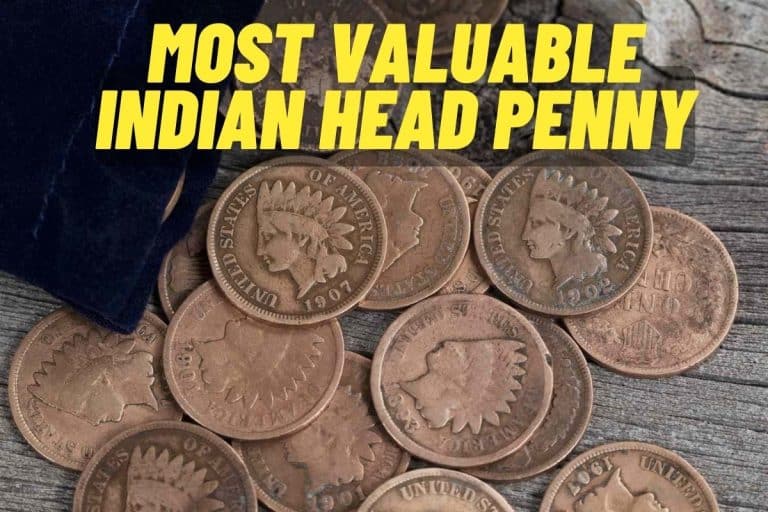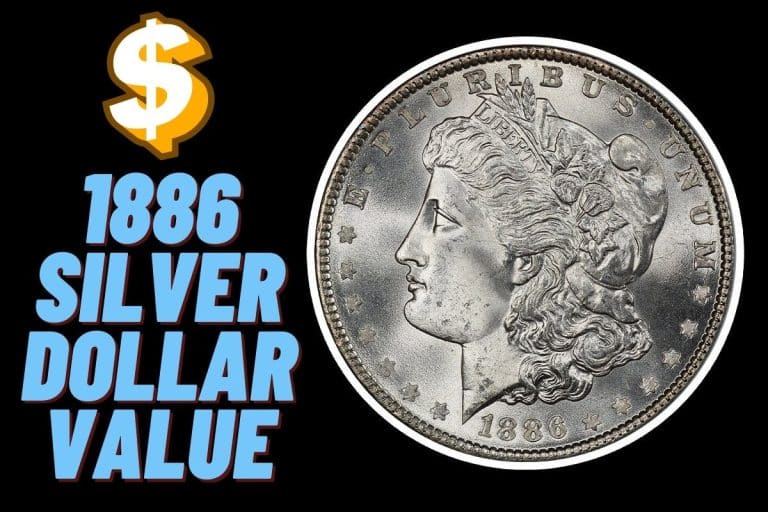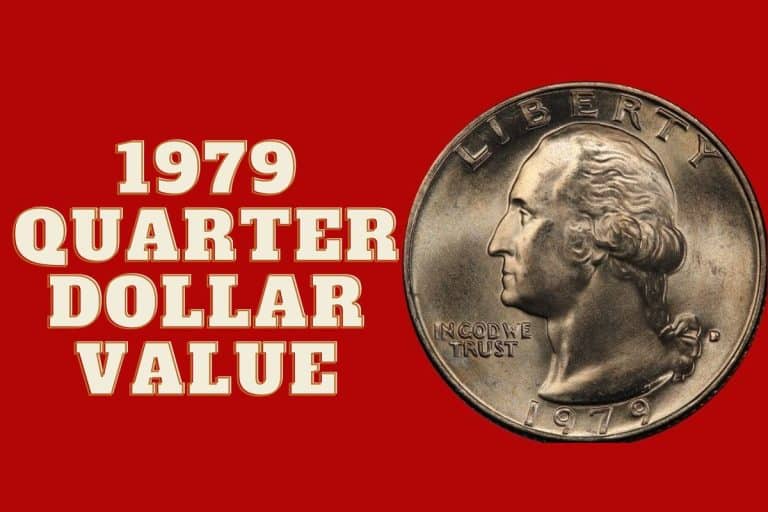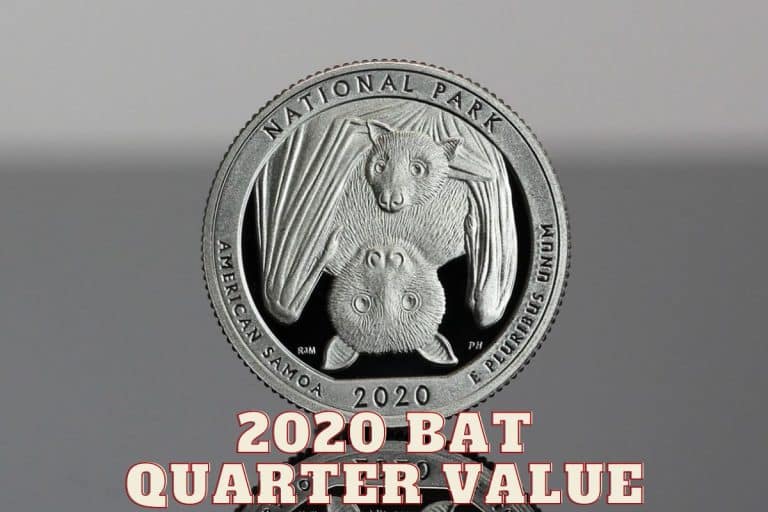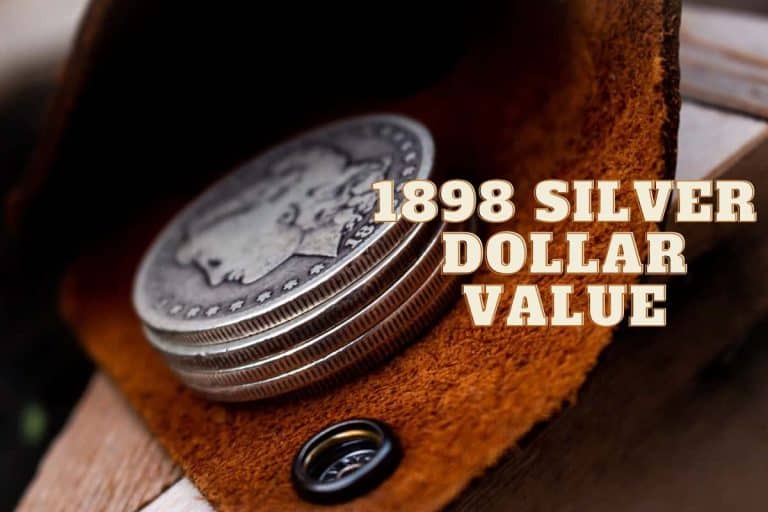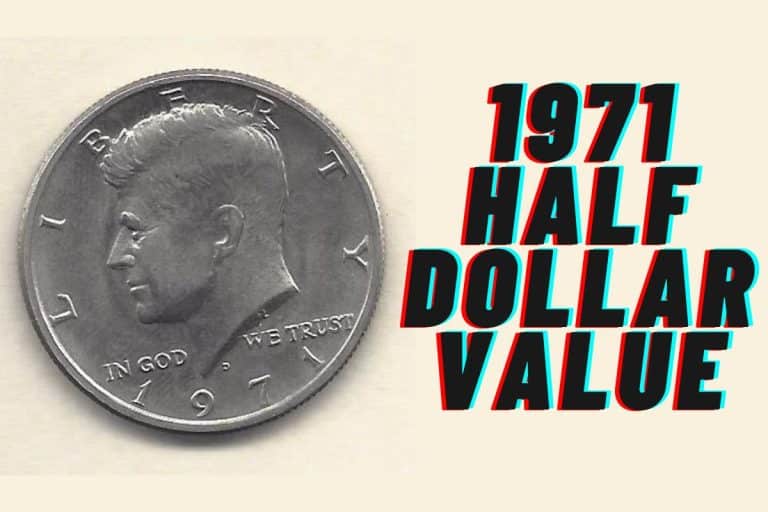Unlock the hidden potential in your coin collection with a 1964 Half Dollar. With a range in values from $9 to thousands of dollars, you could be sitting on a fortune without even knowing it. Take advantage of this opportunity and find out the incredible value of your coin now!
The 1964 half-dollar is exceptional because it commemorates the late President Kennedy. After his assassination, many people requested this coin to honor him. The U.S. mints struck this coin immediately after his death, and it was in circulation by January 1964. This article elaborates more about the 1964 half-dollar value and more!
How Much Is A 1964 Half Dollar Worth?
Coin collectors hoarded the half-dollar coins, resulting in the mints striking a total of 429,509,450. They are readily available at an affordable price. As of February 2023, NGC valued a 1963 Kennedy half-dollar at $11 in circulated condition.
The value of a 1964 half-dollar depends on the mint mark and the grading scale. Kennedy half-dollars with a mint mark are worth slightly more than those without. The first coins minted have a higher value due to their higher silver content.
1964 Half Dollar Value Chart
The value chart below shows the value of the Kennedy half dollars depending on the mint mark and the coin's condition.
Type of coin
Good
Very Good
Fine
Very Fine
Extremely Fine
A.U. 50
MS 60
MS 65
PR 65
1964 no mint half dollar
$9.19
$9.19
$9.19
$9.19
$9.19
$9.19
$10.54
$17
$19
1964 D mint mark half dollar
$10.28
$10.28
$10.28
$10.28
$10.28
$10.28
$11.73
$19
–
Factors that Affect the Value of the 1964 Kennedy Half Dollar
Mint Mark. Only two mints struck the 1964 half dollar; the Philadelphia and the Denver.
- 1964 “D” Mint Mark. The Denver mint struck a total of 156,205,446 coins. A coin in good condition values $10.48, while an MS 60 Uncirculated value is $26.
- 1964 No Mint Mark. The Philadelphia mint struck 273,304,004 half-dollar coins and didn’t have a Mint mark. A coin in circulated condition has a value of $6.50, and $25 for one in excellent condition.
The condition of the coin. The quality of a coin determines its grade and value. A coin graded as “good” has the lowest rate and value, while those graded uncirculated M.S. have the best and highest value.
Variants of the 1964 Kennedy Half Dollar
1964 Kennedy Errors
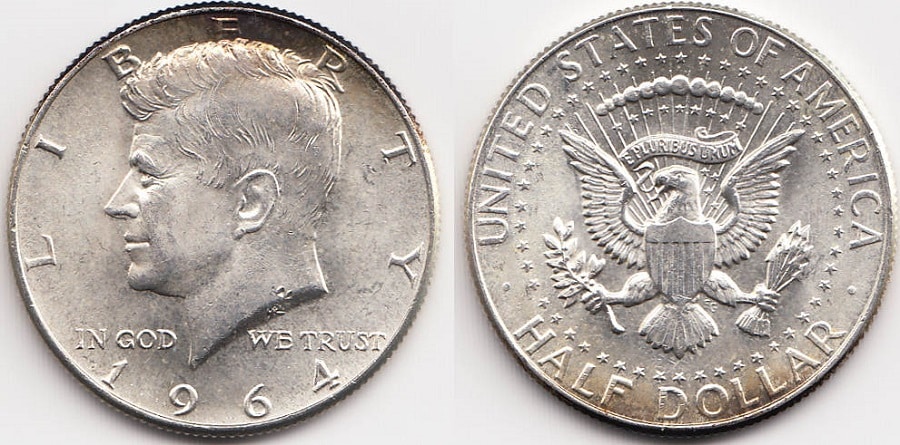
Mint mistakes are an inevitable part of each coin series. This feature's uniqueness makes these coins so desirable to collectors. The significant errors of the 1964 half-dollar are:
- The 1964 greatly accented hair. The hair on Kennedy's head is more pronounced on these coins.
- Double strike and double die errors. This error occurs with the words “WE TRUST.” There's a slight doubling on top of the letters. In many instances, the “RTY” letters in “LIBERTY” also have a double strike.
- Obverse Triple Die. In some 1964 Kennedy dollars, you may notice that the word “IN GOD WE TRUST” and “1964” are struck triple times on the obverse.
The 1963 Half Dollar Proofs
The first coins to be struck have more emphasized features. For instance, in the first coin, Kennedy’s hair was more. His wife requested they reduce the amount of hair above his ear; this created two varieties of the half-dollar coin.
These two coins have different values depending on the difference in design and details.
- Contrast in a cameo, which is so faint that only an expert would see it.
- Deep Cameo, Cameo with deep contrast between the pattern and the background
The 1964 Kennedy SMS Half Dollar
The “SMS” Kennedy from 1964 is the rarest of all Kennedy half dollars. Researchers are still working on its origins and production methods. They have a unique quality that is acute, and their finish is satin. Die polishing lines may be seen on the fields, but there are no contact traces, suggesting that each coin was hand struck.
In 2019, a remarkable auction record was set for the rare 1964 SMS Half Dollar, fetching a staggering $156,000.
1964 Half Dollar History

The assassination of John Kennedy took place on November 22, 1963. Many people admired him, so they requested the Mint to make a commemorative coin for the fallen President. Fortunately, the acting President, Johnson, endorsed the idea.
U.S. Mint Chief Engraver Gilroy Roberts created the coin's obverse, while Frank Gasparro created the reverse. One week after Kennedy's death, the mints began preparing designs for the half-dollar so that it would be in circulation by January. The new coin was to replace the Franklin coin. Denver mint was the first to produce the Kennedy a half dollar, and then the Philadelphia mint.
After the release of the first Mint, Mrs. Kennedy requested that the hair design in the coin be changed. It resulted in two varieties of the Kennedy half dollar-the one with overworked hair and the one with slight hair changes.
1964 Kennedy Half Dollar Design

Coins struck in the first year have 90% silver and 10% copper, but those minted in the following years have 40% silver and 60% copper. The face of the coin portrays Kennedy with a thin smile, facing the left side. The coin has the word “LIBERTY” on the top, below the President's neck is “IN GOD WE TRUST,” and on the base is the mint year, “1964”.
The reverse features an eagle with spread-out wings holding a scroll written “E PLURIBUS UNUM” on its beak and a shield on its chest. Its right claw holds an olive branch, while the left one has a bundle of 13 arrows.
Arrows signify war, the shield means that the President is ready to protect America, and the olive branches symbolize peace. Fifty stars surround the eagle. At the top of the coin, you will see “UNITED STATES OF AMERICA” and “HALF DOLLAR” at the bottom of the half-dollar coin.
Conclusion
The 1964 Kennedy half dollars are a special series that honor the fallen President. The Kennedy half-dollar errors are the 1964 greatly accented hair, double strike, and double die coins.
1964 half-dollar value depends on the coin's condition and the mint mark. They were struck only in Philadelphia and Denver mints. Those minted in Philadelphia don't have a mint mark, but Denver-minted coins have a “D” mint mark.

